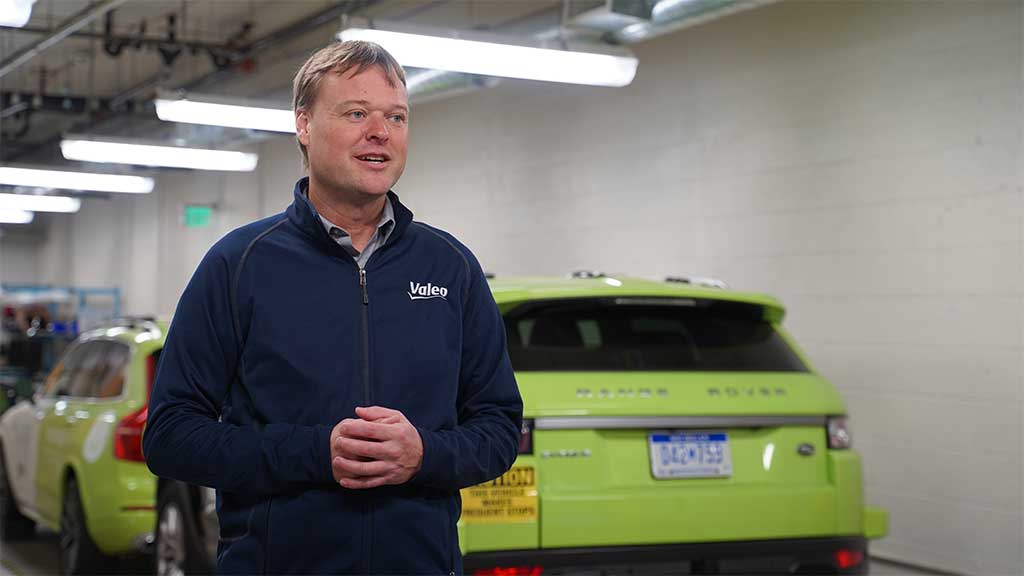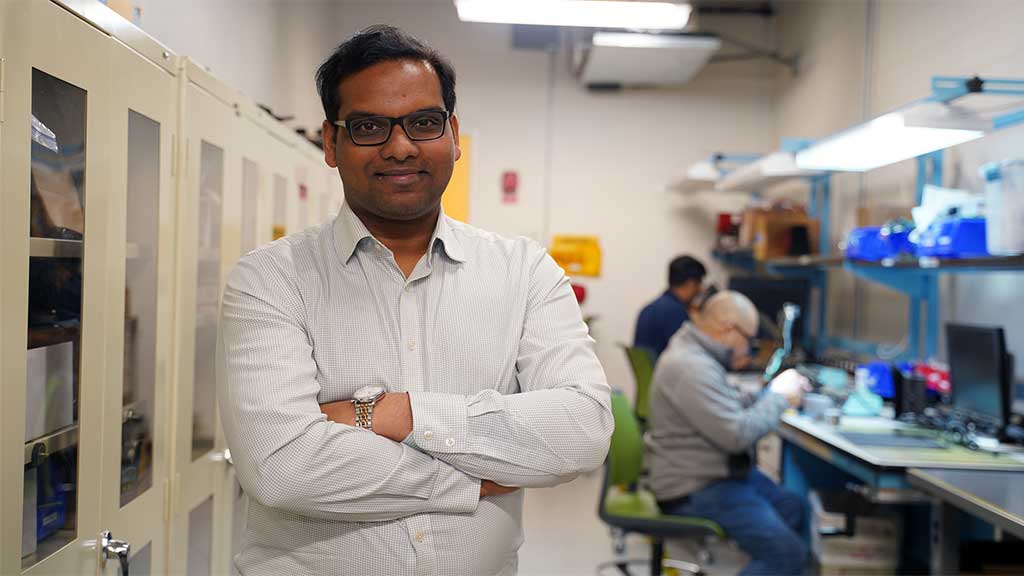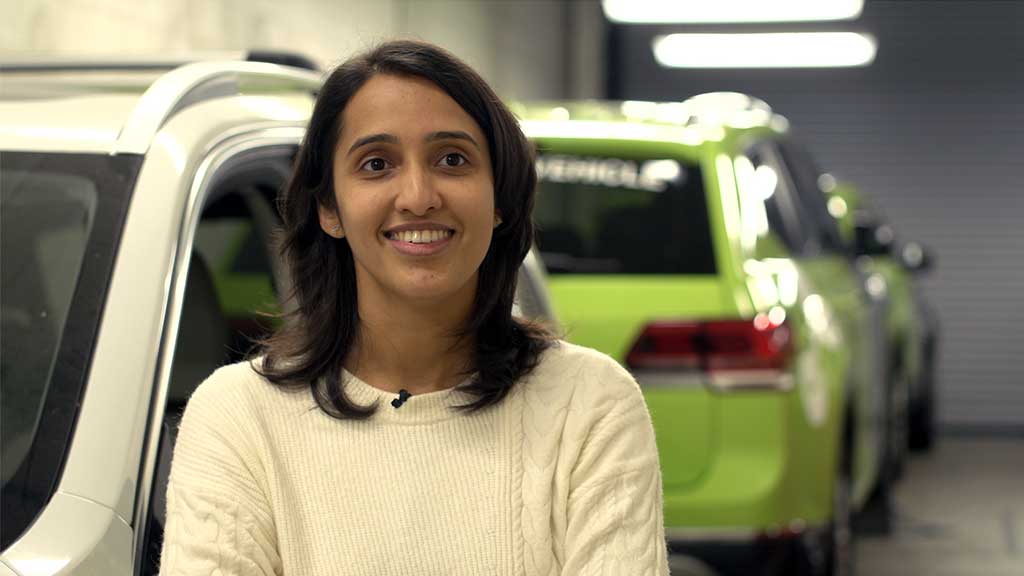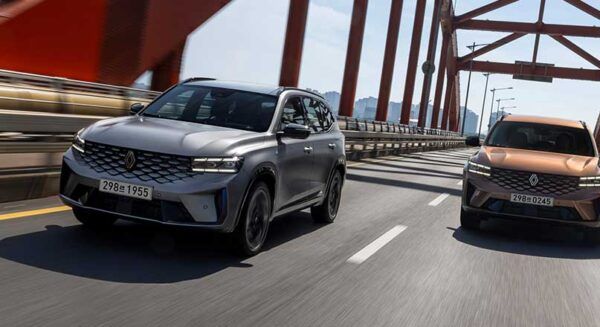Valeo San Mateo, the Silicon Valley innovation hub for automotive software
The team at Valeo’s research and innovation center in San Mateo, California, dreams up the future of mobility in the fields of autonomous vehicles, machine learning, artificial intelligence and even augmented and virtual reality experiences for vehicles.
This is where Valeo’s innovative technologies and automotive software applications Movepredict.ai and Pantomime were created, expanding the horizons of ADAS and audiovisual features for vehicles. The site also created Voyage XR, which allows your family and friends to join you virtually in the car and share the journey.
The Pantomime software, one of the latest innovations to come from the San Mateo team and featured at CES 2023, is an artificial intelligence algorithm that uses cameras equipped on the vehicle to understand if authorized traffic controllers like police officers, construction workers, or bicyclists are in the scene. The Pantomime software will read their hand signals so an autonomous car can react accordingly.
The team represents Valeo products and technologies in the San Francisco Bay area, and interacts with new mobility players to understand the future of mobility. Being in Silicon Valley also allows Valeo to have its finger on the pulse for the latest trends in tech and develop relevant applications to bring them to the automotive industry.
For many years now, Valeo has been part of a thriving ecosystem in Silicon Valley, where it works with traditional car manufacturers, new players in the mobility field and major tech companies.
The small team of engineers and developers at Valeo San Mateo has a startup spirit, but has the advantage of being a part of the company’s global network of R&D centers and industrial sites around the world.
The team counts talent from a wide range of backgrounds beyond the automotive industry, including the Internet of Things, video games and connectivity.
“The diversity of experience and expertise contributes to incredible creativity,” says Peter Groth, the R&I site manager.

Peter Groth
“We develop technologies to help our customers get ahead in being able to offer safer and cleaner mobility,” he added.
Valeo is always looking to the future – and beyond automotive – and thinking about how our technologies can benefit other industries, like agriculture or mining, or even how to make home lawnmowers electric-powered and autonomous.
“I’ve been in the automotive industry since I started my career,” said Harsha Gorantla, R&I Project Manager. “When I found my job at Valeo, it was clear that this was the place I had to be if I wanted to work on the most innovative automotive tech”.

Harsha Gorantla
Gorantla counts his 2,400-mile road trip across the U.S., from California to Michigan, as one of his most interesting experiences at Valeo. And why?
“We did 90% of it in autonomous driving mode,” he said. “We collected a lot of data from the trip to improve the system and further pave the way for the autonomous car.”
Anusha Manila is a deep learning engineer by training and works as a software engineer for perception in Valeo’s InnoCore team, which focuses on innovation and research for immersive experiences and digital services for the automotive industry.
“The idea is to take our products and technologies, like our LiDAR or cameras, and build something new out of them, to push the technology even beyond its primary mission, which is most often safety, to offer new immersive experiences,” says Manila.

Anusha Manila
One of the main projects the team is working on is to bring augmented reality to the vehicle.
“The applications are endless,” Manila says. “Imagine just being able to relax while your electric car charges, or passengers could play games or use AR for learning activities in the car.”
Groth noted, “Ultimately, everything we do here is about making your journey safer, cleaner and more intelligent, and more fun, if we can.”
Similar News



